Jan 26, 2025

*From [A FORTRAN Coloring Book](https://archive.org/details/9780262610261) by Roger Kaufman (1978)*
Finding the \(x\) where a scalar function \(f(x) = 0\) is a common problem in numerical programming. There are numerous applications to this. In orbital mechanics, for example, we may want to find the time at which a spacecraft reaches a certain altitude, or enters the Earth's shadow. For these cases, the independent variable is time, and the function \(f\) requires integration of the equations of motion of the spacecraft (for example, by using an IVP solver such as DDEABM). Integrating to an event is often referred to as a "G-stop" feature in these types of applications.
One way to solve this problem is using a derivative-free bracketing method. For these, only function evaluations are used, and the algorithm begins within a set of bounds (\([x_a, x_b]\)) that bracket the root (i.e., \(sign~f(x_a) \ne sign~f(x_b)\)).
Over at the FORTRAN 77 Netlib graveyard, the classic zeroin root finding method can be found that implements such an algorithm, namely Brent's method by Australian mathematician Richard Brent from 1971.

In my roots-fortran library, I have modern Fortran implementations of this method and many others, as well as a lot of benchmark test cases. The library can be compiled for single (real32), double (real64), or quad (real128) precision reals.
For real64 numbers and convergence tolerance \(\epsilon\) = 1.0e-15, the following table lists the number of function evaluations for various methods to converge to the root for various test functions:
| \(f(x)\) |
\([x_a, x_b]\) |
\(x_{root}\) |
BS |
PE |
ITP |
TM |
BR |
AB |
MU |
CH |
| \((x - 1) e^{-x}\) |
\([0,1.5]\) |
1.0 |
46 |
10 |
11 |
9 |
11 |
10 |
9 |
9 |
| \(\cos x - x\) |
\([0,1.7]\) |
0.7390851332151607 |
47 |
8 |
9 |
8 |
8 |
8 |
7 |
8 |
| \(e^{x^2 + 7x - 30} - 1\) |
\([2.6,3.5]\) |
3.0 |
44 |
20 |
17 |
18 |
12 |
31 |
11 |
11 |
| \(x^3\) |
\([-0.5,1/3]\) |
0.0 |
17 |
50 |
16 |
46 |
40 |
38 |
61 |
17 |
| \(x^5\) |
\([-0.5,1/3]\) |
0.0 |
11 |
53 |
12 |
20 |
19 |
39 |
35 |
11 |
| \(\cos x - x^3\) |
\([0,4]\) |
0.8654740331016144 |
48 |
13 |
11 |
13 |
14 |
15 |
10 |
11 |
| \(x^3 - 1\) |
\([0.51,1.5]\) |
1.0 |
46 |
10 |
11 |
9 |
10 |
9 |
7 |
8 |
| \(x^2 ( x^2/3 + \sqrt{2} \sin x ) - \sqrt{3/18}\) |
\([0.1,1]\) |
0.3994222917109682 |
47 |
12 |
17 |
10 |
12 |
12 |
9 |
10 |
| \(x^3 + 1\) |
\([-1.8,0]\) |
-1.0 |
47 |
10 |
10 |
11 |
10 |
12 |
9 |
9 |
| \(\sin((x-7.14)^3)\) |
\([7,8]\) |
7.14 |
18 |
51 |
20 |
48 |
46 |
38 |
52 |
18 |
| \(e^{(x-3)^5} - 1\) |
\([2.6,3.6]\) |
3.0 |
11 |
55 |
12 |
24 |
26 |
41 |
29 |
11 |
| \(e^{(x-3)^5} - e^{x-1}\) |
\([4,5]\) |
4.267168304542125 |
44 |
53 |
45 |
11 |
14 |
58 |
20 |
14 |
| \(\pi - 1/x\) |
\([0.05,5]\) |
\(1 / \pi\) |
50 |
14 |
49 |
18 |
12 |
5 |
13 |
13 |
| \(4 - \tan x\) |
\([0,1.5]\) |
1.325817663668033 |
46 |
14 |
47 |
15 |
13 |
12 |
16 |
15 |
| \(2 x e^{-5} - 2 e^{-5x} + 1\) |
\([0,10]\) |
0.1382571550568241 |
52 |
13 |
16 |
13 |
13 |
11 |
13 |
13 |
The methods are: BS = Bisection, PE = Pegasus, ITP, TM = TOMS 748, BR = Brent, AB = Anderson Bjorck, MU = Muller, and CH = Chandrupatla.
There seems to be cottage industry of creating slight variations of this type of method. There are any number of recent papers on this topic, all claiming some improvement. In reality, a lot of the newer methods really aren't great. An obvious trick is a choose functions where your method behaves well. Another is to only compare against very simple methods (such as bisection or regula falsi, which are known to be inefficient). Finally, the most devious trick is to list the number of iterations of the method, rather than the number of function evaluations, which is basically a useless comparison that obscures the real cost for methods that have multiple function evaluations per iteration.
The Brent method is still one of the best performers. The Chandrupatla method from 1997 is also quite good. For the full set of test cases, see the roots-fortran git repo.
Minimization methods
A related type of algorithm are derivative-free minimization methods. The FMIN function at Netlib is based on Brent's original localmin algorithm (modern version here). The PRIMA library implements modern versions of M.J.D. Powell's derivative-free minimizers for multidimensional functions.
See also
- R. P. Brent, "An algorithm with guaranteed convergence for finding a zero of a function", The Computer Journal, Vol 14, No. 4., 1971.
- R. P. Brent, "Algorithms for Minimization Without Derivatives", Prentice-Hall, 1973.
- Gregory W. Chicares, Brent's method outperforms TOMS 748 [Let me illustrate...]
- T. R. Chandrupatla, "A new hybrid quadratic/bisection algorithm for
finding the zero of a nonlinear function without derivatives", Advances in
Engineering Software, Vol 28, 1997, pp. 145-149.
- M. J. D. Powell, "The BOBYQA algorithm for bound constrained optimization without derivatives," Department of Applied Mathematics and Theoretical Physics, Cambridge England, NA2009/06, 2009.
- polyroots-fortran -- Another modern Fortran library, specifically for finding the roots of polynomials.
Nov 24, 2023

Fortran 2023 (ISO/IEC 1539-1:2023) has been officially published. This replaces the previous standard (Fortran 2018). In a previous post I listed the updates that are in this release (then called "Fortran 202x"). It will be a while before we have fully-compliant Fortran 2023 compilers. In the latest update to the Intel Fortran Compiler, they have started to add a few minor things.
Fortran is the oldest surviving programming language still in common use. Originally developed in 1957, first standardized in 1966, and continuously updated since that time, Fortran remains at the heart of scientific and high-performance computing.
The next standard (unofficially called Fortran 202y) is also already in work.

See also
- Programming languages: Fortran, ISO, Nov. 17, 2023.
- S. Lionel, Fortran 2023 has been Published!, Nov. 23, 2023.
- John Reid, The new features of Fortran 2023, Mar. 13, 2023.
- J. Williams, The New Features of Fortran 202x, Mar 27, 2022.
- Fortran: High-performance parallel programming language
Oct 24, 2021

One of my major pet peeves about Fortran is that it contains virtually no high-level access to the file system. The file system is one of those things that the Fortran standard pretends doesn't exist. It's one of those idiosyncratic things about the Fortran standard, like how it uses the word "processor" instead of "compiler", and doesn't acknowledge the existence of source code files so it doesn't bother to recommend a file extension for Fortran (gotta preserve that backward compatibility just in case punch cards come back).
There are various hacky workarounds to do various things that poor Fortran programmers have had to use for decades. Basically, all you have is OPEN, CLOSE, READ, WRITE, and INQUIRE. Here are a few examples:
Deleting a file
Here's a standard Fortran routine that can be used to delete a file:
function delete_file(name) result(istat)
implicit none
character(len=*),intent(in) :: name
integer :: istat
integer :: iunit
open(name=name,newunit=iunit,status='OLD',iostat=istat)
if (istat==0) close(iunit,status='DELETE',iostat=istat)
end function delete_file
As you can see, it's just a little trick, using a feature of CLOSE to delete a file after closing it (but first, we had to open it). Of course, note that the error codes are non-standard (the Fortran standard also doesn't consider this information important and lets the different compilers do whatever they want -- so of course, they all do something different). And of course, there is no exception handling in Fortran either (a post for another time).
Creating a directory
There is absolutely no standard ability in Fortran to create or delete a directory. Again, Fortran basically pretends that directories don't exist. Note that the Intel Fortran Compiler provides a super useful non-standard extension of the INQUIRE statement to allow it to be used to get information about directories. It's a pretty ridiculous state of affairs (Fortran added a bazillion IEEE routines in Fortran 2018 for some reason that nobody needed, but it still doesn't have something like this that everybody has needed for decades). Intel's IFPORT portability module provides many useful (non-standard) routines for accessing the file system (for example DELFILESQQ for deleting files and DELDIRQQ for deleting a directory). I use these all the time and the fact that they are non-standard and not present in other compilers is a major source of annoyance.
For some file or directory operations, you can always resort to using system calls, and thus have to provide different methods for different platforms (of course Fortran provides no standard way to get any information about the platform, so you have to resort to non-standard, possibly compiler-specific, preprocessor directives to do that). For example, to create a directory you could use:
subroutine make_directory(name)
implicit none
character(len=*),intent(in) :: name
call execute_command_line ('mkdir '//name)
end subroutine make_directory
That one was easy because "mkdir" works on macOS, Window, and Linux. See previous post about getting command line calls into strings, which can also be useful for some things like this.
Getting a list of files
How about getting a list of all the files that match a specific pattern? Again, this can be done if you are using the Intel compiler using the IFPORT module GETFILEINFOQQ routine:
function get_filenames(pattern, maxlen) result(list)
use ifport
implicit none
character(len=*),intent(in) :: pattern
integer,intent(in) :: maxlen
character(len=maxlen),dimension(:),allocatable :: list
integer(kind=int_ptr_kind()) :: handle
type(file$infoi8) :: info
integer :: length
allocate(list(0))
handle = file$first
do
length = GETFILEINFOQQ(trim(pattern), info, handle)
if ((handle==file$last) .or. (handle==file$error)) exit
list = [list, info%name]
end do
end function get_filenames
The file$infoi8 type is some super-weird non-standard Intel thing. Note that this example only returns the file names, not the full paths. To get the full path is left as an exercise to the reader. Also note that Fortran doesn't provide a good string class, so we just set a maximum string length as an argument to this function (but note that Intel is only returning a 255-character string anyway).
Final thoughts
There are various libraries out there that can do some of this. For example, M_system (a Fortran module interface for calling POSIX C system routines). Hopefully, a comprehensive set of filsystem routines will eventually make it into the Fortran Standard Library.
See also
Oct 17, 2021
With the right plugins, Microsoft Visual Studio Code can be turned into a very good modern Fortran IDE. Here are some of my favorites:
Historically, good full-featured IDEs for modern Fortran have been hard to find. Intel Fortran integrates with the full MS Visual Studio, and I used that for many years. But, except for syntax highlighting and automatic determination of compile order, it is basically terrible. I always have to disable the "IntelliSense" features since it brings the interface to a crawl (it's been like this for years and they don't seem to care enough to fix it). Unfortunately, Intel's excellent Fortran debugger also only works from within Visual Studio, so if you need to use it, you are stuck in that environment.
I've pretty much converted to use VSCode now for all Fortran coding (on both Mac and Windows). In the past, I have also used TextWrangler, Sublime Text, and Atom.
See also:
Oct 02, 2021

*The first Fortran program I ever wrote (Jan. 1997).*
At the recent FortranCon2021, I was amused to see in the presentation "The State of Fortran 2021" that the first bullet point on the slide "Formation of Fortran-Lang" was:
August 2019 Conversations on Twitter between Ondřej Čertík, Milan Curcic, and Jacob Williams bring out common perceived shortcomings in the Fortran ecosystem
Laurence Kedward, et. al., "The State of Fortran 2021", Fortran2021, Sept. 2021
So, now, over two years later, I think it's finally time to tell my side of the story. 😀
I was first introduced to Fortran 25 years ago, in 1997 (my only previous programming experience was with BASIC on Apple ]['s). We used the WATFOR FORTRAN 77 compiler on DOS machines in an undergraduate programming class for engineers. Little did I know (or little did the university know) that Fortran 90 had been published years earlier (and indeed Fortran 95 was published at the end of that very semester).
Over the course of my academic career, I encountered and used Fortran a few times, mostly FORTRAN 77, and mostly to solve homework problems or do class projects. I came to use IMSL, Numerical Recipes in FORTRAN 77, Harwell Subroutine Library, and had some minimal exposure to Fortran 90 one semester when asked to modernize some old code by one of the professors for some project that I've forgotten about (something to do with gravity anomalies). But mostly I used a lot of Matlab, which is very popular among engineering students (due to cheap student licenses). I also used a little MathCad, some Mathematica, REALBasic (since renamed Xojo), and Visual Basic (classic). There was then no exposure in the aerospace engineering curriculum of two major US universities to any sort of formal software development practices (for all I know this is still the case). I never once encountered version control, unit testing, continuous integration, etc. Maybe those weren't as common then? (Subversion didn't come out until 2000, and Git until 2005).
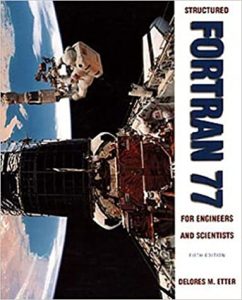
*The FORTRAN book from my first (and only) programming class. I still have it.*
When I entered professional life in late 2006, it wasn't long before I became the lead developer of a Fortran tool at NASA called Copernicus. Originally created by one of my former professors, Copernicus is a tool for spacecraft trajectory optimization and design. While working on Copernicus, I was introduced to Fortran 90/95 in earnest. Copernicus was originally developed on Windows with Compaq Visual Fortran (which, by the time I came along, had recently become defunct) and one of my first projects was to convert the code over to use the Intel Fortran compiler (which we have used ever since). During this period I first became aware of modern-ish (Fortran 95) concepts such as user derived types, operator overloading, function overloading, etc. Eventually Fortran 2003 came along, which was quite a revelation, and as soon as non-buggy implementations of the new features appeared in the Intel compiler (it took a while) I was using it like crazy. It's hard to imagine programming Fortran now without modern features such as type bound procedures. FORTRAN 77 (and indeed, even Fortran 95), to me, now seems like something out of the dark ages. And so I came to really appreciate the Modern Fortran programming language, and wondered why more people didn't use it (or seem to even know about it).
![[from archive.org]](https://degenerateconic.com/uploads/2021/10/compaq.png)
*Compaq Visual Fortran [from [archive.org](https://archive.org/details/fortran66c)]*
The fact was, all was not well in the larger Fortran community. Really, there was very little community. Most of the code I encountered on the internet was still FORTRAN 77, like the last 25 years never happened. There were also few if any Fortran blogs (there were a few of exceptions: Fortran Dev [now defunct], Fortran in a C World [now also defunct], and Steve Lionel's Doctor Fortran column at Intel [still updated infrequently]). One of the bright spots was the Intel Fortran Compiler forum, which was always full of helpful folks (Steve, of course, the most helpful of all). There were very few websites to speak of that had much useful Modern Fortran content. Fortran.com is a mostly-useless site, and fortran.org has been held hostage by a domain name squatter for years. Ondřej Čertík's site fortran90.org is good (but of course it is folly to put the standard name in the URL since that will eventually be out of date). Fortranwiki.org, administrated by Jason Blevins is also a good site.

*The favicon for this website*
On June 26, 2014, I started this blog, with the intent to focus on modern Fortran and astrodynamics algorithms. Earlier that year, I had also discovered GitHub and started to work on some projects there as well. At work, we were still using Subversion for version control at this time, but I wanted to learn more about git. The blog and my presence on GitHub was an experiment to attempt to publicly develop an ecosystem of Modern Fortran libraries (either by creating new ones, or refactoring old codes that hadn't been updated in decades that nobody else seemed to want to update), as well as to advocate for Fortran and show what it could do. On GitHub I encountered others who were also working on Fortran tools, namely Stefano Zaghi (author of lots of great libraries and tools, including FoBiS, the Fortran Building System for poor people, which is very dear to my heart), Zaak Beekman (who helped me greatly with JSON-Fortran and introduced me to continuous integration), Chris MacMackin (author of the ford automatic documentation generator for Fortran, which I contributed a very very small amount to), and a few others. Zaak also started a GitHub group called the Fortran F/OSS Programmers Group, which I also participated in and view as sort of a precursor to the fortran-lang group. Zaak and I coauthored a paper in 2018 on Modern Fortran applications in my field of spacecraft trajectory optimization, which I consider to be my magnum opus.

In April 2017, I was approached by Manning Publications, who wanted to discuss the possibility of writing a Fortran book. I didn't really have time to do that so I declined. But luckily, they also approached Milan Curcic, who did end up writing it (Modern Fortran, 2020) and it turned out excellent.
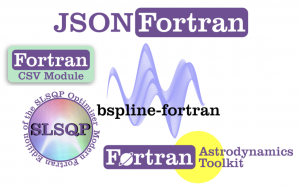
I currently have 67 repositories on GitHub, the vast majority of them being Fortran libraries, and they are used by lots of people all over the world in various fields of science and engineering. But one thing I didn't really have the aptitude or know-how to do was to form an online community. Years ago I considered buying the fortran.io domain when I noticed it was still up for grabs, but it was eventually bought by Nick Doiron around 2016 (see FORTRAN.io -- finally, a Fortran Web Framework) which made the rounds somewhat on the tech internet, basically just as a novelty. I guess the .io fad for tech domain names is over now anyway?
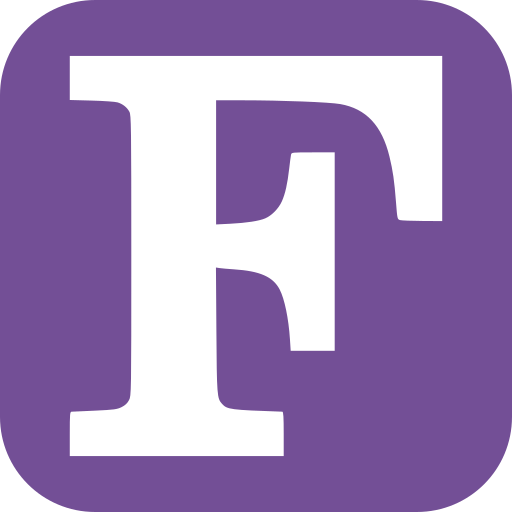
*The Fortran-lang logo.*
There just wasn't a website that really served as a focal point for the entire Fortran community. It was a huge image problem. This was one of the things I lamented in my (infamous?) August 2019 post. Luckily, Milan had purchased fortran-lang.org sometime in 2018, and that is what he activated for the new site in April 2020. Milan and Ondřej have already written about their amazing efforts to rejuvenate the Fortran community and ecosystem (I first became aware of Ondřej in April 2019 when he announced LFortran, which totally blew my mind). The fortran-lang website, the Fortran Standard Library, the Fortran Package Manager, and everything else that has come out these activities has been spectacular. I have actually contributed very little to all of this, although I did help with the logo (see this previous post for the story on that). I also continue to toil away on my libraries like before (recently getting a good number of them set up to compile with the new Fortran Package Manager).
So, now you know my side of the story. The future of Fortran is looking bright, and I'm pleased to have contributed in some small way. Now get off my lawn.
See also
- J. Williams, R. D. Falck, and I. B. Beekman, "Application of Modern Fortran to Spacecraft Trajectory Design and Optimization", 2018 Space Flight Mechanics Meeting, 8–12 January 2018, AIAA 2018-145.
- J. Williams, End of Life [degenerateconic.com] August 3, 2019
- J. Williams, New Blood [degenerateconic.com] April 26, 2020
- M. Curcic, First year of Fortran-lang [medium.com] Dec 21, 2020
- O. Čertík, Resurrecting Fortran [ondrejcertik.com] March 12, 2021
Jun 13, 2021

There are a lot a JSON libraries available for Fortran nowadays. The complete list, as far as I know is:
- fson Fortran 95 JSON Parser. JSON-Fortran is a fork of this library. (started 2012).
- YAJL-Fort A Modern Fortran Interface to YAJL. This one is an interface to a C library, and not pure Fortran. See also petaca. (started 2013).
- JSON-Fortran A Fortran 2008 JSON API. This is my library. As far as I know, this was the first production-ready JSON parser written in modern Fortran. (started 2014).
- fortjson JSON library written in Fortran 2003. Designed with portability across HPC architectures in mind. (started 2018).
- jsonff JSON for Fortran. (started 2019).
Example
Here's an example of using JSON-Fortran to read in some data from a JSON string:
program test
use json_module, wp => json_RK, ip => json_IK
implicit none
type(json_file) :: json
integer(ip) :: t
real(wp),dimension(:),allocatable :: x
call json%deserialize('{"t": 1, "x": [2.0, 3.0, 4.0]}')
call json%get('t', t); write(*,*) t
call json%get('x', x); write(*,*) x
end program test
This prints:
1
2.00000000000000 3.00000000000000 4.00000000000000
Note that JSON-Fortran has all sorts of options for:
- Using different real (real32, real64, and real128) and integer kinds (int8, int16, int32, and int64).
- Controlling the JSON format for printing, including number of spaces for indenting, printing vectors on one line only, or full minification with no extra whitespace or line breaks.
- Support for comments in a JSON file.
- Multiple ways to get data from a JSON structure, such as RFC 6901 "JSON Pointer" paths or JSONPath) "bracket-notation".
- Graceful handing of unusual inputs such as NaN or Infinity.
- Thread safe error handling.
See also
Dec 18, 2020
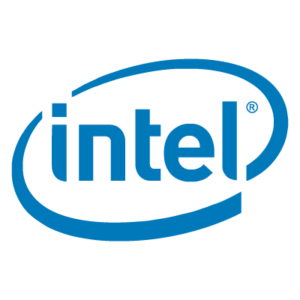
Intel recently released its new oneAPI Toolkit, which had been in beta for a while. According to their documentation, oneAPI includes various products:
The big news here is that this is all now entirely free to use. They are all available for Windows, Linux, and macOS. The Fortran compiler also now includes all of the Fortran 2018 standard. Apparently, Intel will still sell you a license, but it seems the only reason to buy one would be to get the Premier Support.
See also
Oct 30, 2020

MPFUN2015 is a Fortran arbitrary precision library by David H. Bailey. An archive of the source code can be found on his website here (note that I also have a mirror of the source at GitHub if you want to peruse it). This library seems to be one of the few freely-available production-ready arbitrary precision Fortran libraries available that I can find, although arbitrary precision Fortran code has existed for quite a while (e.g., see Reference 1 from 1971). MPFUN2015 is pretty easy to use, but I think could use a little bit of modernization.
See also
- L. C. Maximon, Fortran Program for Arbitrary Precision Arithmetic, National Bureau of Standards, NBS 10-563, April 1, 1971.
- D. H. Bailey, A Thread-Safe Arbitrary Precision Computation Package (Full Documentation), August 23, 2019.
Apr 26, 2020

It's been about 8 months since my screed about things that were wrong with the Fortran ecosystem and standards committee. I got a lot of feedback from that post. It seems like a lot of people felt the same way. The funny thing is, it seems like some things are slowing beginning to change:
- A new GitHub repo was created for the community to work on proposals for the Fortran standard, to be discussed at committee meetings. This is unprecedented, and hopefully is just the beginning of putting the actual standard on GitHub for community inputs and editing.
- A new project: the Fortran standard library has begun to be developed on GitHub. This is for things that have been left out of the standard, and can be added to a library much quicker than the standard and compilers can be updated.
- A new website has appeared: fortran-lang.org as well as an associated project on GitHub. The goal of this is to be "the home" of Fortran on the internet. Something the two Fortran committee websites have never attempted to be. This site is community created (the contents are also on GitHub, so join us in helping to make it better).
These efforts are terrific, and serve as an online focus for the Fortran community, which up to this point has been mostly scattered and unorganized. The Fortran standards development process has hitherto been extremely opaque to the user community, so shining (still just a little bit of) light on that is good for everybody I think.
It has been clear for some time that some kind of change was needed in how the Fortran language is developed. In my view, the Fortran standards committee has failed spectacularity in the years since the release of Fortran 2003. Fortran 2003 was an amazing update to Fortran 95 that significantly expanded the utility of the language. Since then (for almost two decades) the focus has been on supercomputers and incremental improvements. The main pillar of Fortran language development seems to be to make absolutely sure that 50 year old spaghetti code still works without any modifications, even at the expense of correcting mistakes from decades ago that continually bedevil beginner Fortran programmers. In the meantime, Python (basically a scripting language used to wrap C/C++ libraries) has almost completely taken over scientific/technical computing, and amazing new languages have been created entirely from scratch (e.g., Chapel, Julia, Rust, Go, Swift) that all have made inroads into this field. All while the Fortran committee did very little to advance the language into new areas or make it more appealing to new programmers or people developing new libraries and codes. Fortran continues in some respects to hold its own on supercomputers and some massive legacy applications, but the writing is on the wall. The situation is dire, but I guess some of the committee seem to think nothing is wrong or they are in no hurry to do anything about Fortran's steady decline into irrelevance. According to a recent first-time attendee of the last committee meeting:
I spent last week at my first Fortran Standards Committee meeting. It was a pretty interesting experience. Everyone there was brilliant, and interested in trying to do a good job improving the language. And yet, it was still somehow very disfunctional.
everythingfunctional.wordpress.com

*Recent Meeting of the Fortran Standards Committee. (I kid because I love!)*
So I was very pleased to learn that Ondřej Čertík (@ondrejcertik) is running for chairman of the ISO Fortran Committee. Ondřej has been one of the main people spearheading all these new efforts. He also is the one behind LFortran, which looks to be one of the most innovative Fortran compilers in recent memory (actually moving Fortran just a little bit toward the direction of dynamic languages like Python, which is absolutely critical for getting new users onboard). Ondřej has published a platform which is fantastic. He has my total support (whatever that's worth!)
So, we'll see where all this goes. Hopefully things are improving. I encourage all Fortran users to support these new efforts, contribute to these new projects, and help with the website. Fortran is still a terrific language for numerical/scientific/technical computing. Getting the user community organized, improving the ecosystem, and improving the language standards process are only going to make it better in the long run.
Fun fact: the "F" Fortran logo shown above is based on the cover of the original IBM Fortran programmer's reference manual from 1956. Using the "WhatTheFont" feature at MyFonts.com, I determined that the font was Clarendon, or something very close to it. I created this icon in Inkscape some time ago in the original ugly brown color (e.g., it's the favicon for this website). Milan Curcic (@realmilancurcic) changed it to a nice purple and started using it on the fortran-lang.org website. I cleaned it up a bit and now SVG and PNG versions can be found here. I guess we'll use it until somebody comes up with something better.
See also
Dec 18, 2019
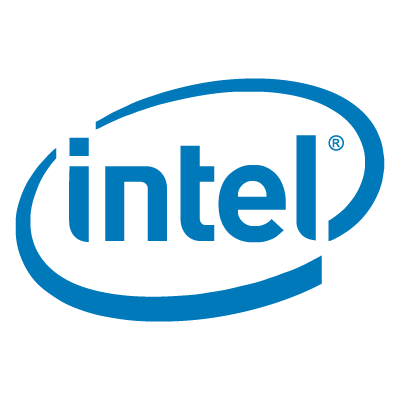
Intel has released version 19.1 the Intel Fortran Compiler (part of Intel Parallel Studio XE 2020). According to the release notes, the new version adds a lot of features from Fortran 2018:
- Enhancements to the IMPLICIT statement allow specifying that all external procedures must declared EXTERNAL
- Enhancements to the GENERIC statement permit it to be used to declare generic interfaces
- The locality of variables may now be specified on a DO CONCURRENT statement
- Enhancements to edit descriptor forms E, D, EN, ES, and G allow a field width of zero, analogous to the F edit descriptor
- The exponent width e in a data edit descriptor may now be zero, analogous to a field width of zero
- The RN edit descriptor now rounds to nearest as specified by Fortran 2018 and ISO/IEC/IEEE 60559:2011
- The EX edit descriptor allows for hexadecimal format output of floating point values. Hexadecimal format floating point values are allowed on input.
- SIZE= may be specified for non-advancing I/O
- The values for SIZE= and POS= in an INQUIRE statement for pending asynchronous operations have been standardized
- The value assigned to the RECL= specifier in an INQUIRE statement now has standardized values
- A new form of the intrinsic function CMPLX does not require the KIND= keyword if the first argument is type COMPLEX
- The arguments to the SIGN function may be of different kinds
- INTEGER and LOGICAL arguments to intrinsic procedures are no longer required to be of default kind
- The named constants STAT_FAILED_IMAGE and STAT_UNLOCKED_FAILED_IMAGE have been defined in the intrinsic
ISO_FORTRAN_ENV module
- The non-block DO statement and the arithmetic IF statement are now deleted in Fortran 2018.
- COMMON, EQUIVALENCE and BLOCKDATA statements are now obsolescent
- The labeled form of DO loops is now obsolescent
- Locality of variables in DO CONCURRENT constructs can now be declared on the DO CONCURRENT statement
- Specific names of intrinsic procedures are now obsolescent
- FAIL IMAGE statement allows debugging recovery code for failed images without having to wait for an actual image failure
- The named constants STAT_FAILED_IMAGE and STAT_UNLOCKED_FAILED_IMAGE have been defined in the intrinsic
ISO_FORTRAN_ENV module
- An optional argument STAT= has been added to ATOMIC_REF and ATOMIC_DEFINE intrinsic procedures
- Optional STAT= and ERRMSG= specifiers have been added to the MOVE_ALLOC intrinsic procedure, to image selectors, and to the CRITICAL statement and construct
- Atomic subroutines ATOMIC_ADD, ATOMIC_AND, ATOMIC_CAS, ATOMIC_FETCH_ADD, ATOMIC_FETCH_AND, ATOMIC_FETCH_OR, ATOMIC_FETCH_XOR, ATOMIC_OR, and ATOMIC_XOR have been implemented
- Collective subroutines CO_BROADCAST, CO_MAX, CO_MIN, CO_REDUCE, and CO_SUM have been implemented
- The SELECT RANK construct has been implemented allowing manipulation of assumed rank dummy arguments
- The compiler will now diagnose the use of nonstandard intrinsic procedures and modules as required by Fortran 2018
- Transformational intrinsic functions from the intrinsic modules ISO_C_BINDING, IEEE_ARITHMETIC, and IEEE_EXCEPTIONS are now allowed in specification expressions
- You can now specify the optional argument RADIX for the IEEE_GET_ROUNDING_MODE and IEEE_SET_ROUNDING_MODE intrinsic module procedures
- The optional ROUND argument has been added to the IEEE_RINT function in the intrinsic module IEEE_ARITHMETIC
- The intrinsic module IEEE_ARITHMETIC now includes the functions IEEE_FMA, IEEE_SIGN_BIT, IEEE_NEXT_UP and IEEE_NEXT_DOWN
- The intrinsic module procedures IEEE_MAX, IEEE_MIN, IEEE_MAX_MAG, and IEEE_MIN_MAG have been implemented
- The intrinsic module procedures IEEE_INT and IEEE_REAL have been implemented
- The intrinsic module IEEE_EXCEPTIONS now contains a new derived type, IEEE_MODES_TYPE, which can be used to save and restore the IEEE_MODES using the IEEE_GET_MODES and the IEEE_SET_MODES intrinsic module procedures
- A new rounding mode, IEEE_AWAY has been added
- SUBNORMAL is now synonymous with DENORMAL
- IEEE_QUIET_EQ, IEEE_QUIET_NE, IEEE_QUIET_LT, IEEE_QUIET_LE, IEEE_QUIET_GT, IEEE_QUIET_GE, IEEE_SIGNALING_EQ, IEEE_SIGNALING_NE, IEEE_SIGNALING_GT, IEEE_SIGNALING_GE, IEEE_SIGNALING_LT, and IEEE_SIGNALING_LE intrinsic module procedures have been implemented
The Intel Fortran Compiler has full support for the Fortran 2008 standard and includes most features from the Fortran 2018 standard.
See also









![[from archive.org]](https://degenerateconic.com/uploads/2021/10/compaq.png)








